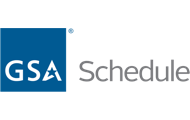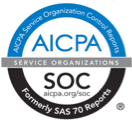People at the top of their field are those that continue to learn and grow every day. Business conditions, market environments and customer expectations are ever evolving, so there is always room for improvement. As businesses strive to achieve best-in-class service, the importance of continuous improvement, on-going development, and goal-setting cannot be stressed enough.
We all know that continuous learning is the path to greater success, but most of us do not give training and coaching the attention it deserves, which is especially true in contact centers. The deluge of customer inquiries and day-to-day-tasks take priority while coaching is relegated to a “nice to have” status without ever executing consistently. Supervisors and managers who want to make and exceed the expectations of their customers and the related business metrics should prioritize regular coaching to ensure that the most effective and efficient service is being provided and critical business KPIs are achieved.
With these goals – and barriers – in mind, let’s discuss how we can solve some of the biggest problems with coaching and training:
Be specific: Many people err by coaching too broadly about general trends and issues that may or may not even apply to the person being coached. People need specific feedback in order to change behavior and make clear connections as to how to change their actions. Use both individual and collective data results to show how specific behaviors affect business KPI outcomes and identify specific and targeted actions they can take to be even more successful.
Use of data: Use data to get to the trends but coach to the specific behaviors.
For example, a supervisor might say, “Our business goal is to increase sales; you need to ask more open-ended questions.” A representative may take that feedback and make efforts to improve, but they may not understand how and when to properly ask an open-ended question that will actually achieve a sale and affect the business, as well as the overall customer experience. With consistent coaching in place, supervisors can give fact-based feedback on the representatives’ performance by using examples from their own calls and share what other representatives have done to drive results. While sharing example
Focus on trends and share ideas: Monthly tip sheets can be extremely beneficial to alleviate issues common across many representatives within the call center or within specific teams. These regular reminders help to reaffirm the customer experience that you are striving to achieve and improve those areas that are distracting from that objective. It is also helpful to have representatives sit with each other to learn new and different ways to achieve a specific objective. Peer coaching can be one of the most powerful tools a supervisor has to drive improved performance.
Align frequency with the program goals: Depending on the size of the teams and the goals of the program, it is important to set consistent coaching sessions based on these factors. For instance, new agents may require weekly coaching in order to quickly address issues while more experienced agents may only need coaching once a month to achieve the best customer experience. The key is to match the frequency of coaching to the needs of the representatives to achieve the business results and then ensure supervisors are executing consistently at that frequency.
Coach the supervisors: Every program’s success relies on the knowledge, understanding, and focus of the supervisors. They must be able to articulate how behaviors affect the business and how agent performance drives customer experience. Supervisors should be listening to calls to identify the specific behaviors that require attention for each representative and develop action plans. The supervisors also need to partner with their quality monitoring teams to enhance their ability to coach their agents, as well as getting both quantitative and qualitative feedback from a robust quality monitoring program.
Drive the right KPIs: Depending on the business and the goals of the customer interactions, supervisors will strive for specific metrics. Metrics like first call resolution are put in place to avoid multiple calls into the contact center, which drive up cost and hinder customer experience. Loyalty and net promoter scores are often captured after these interactions, so it is critical to provide issue resolution as seamlessly as possible.
In short, people won’t change behavior if they don’t understand how to change or what actions to take. People change behavior because you give them a fact-based picture of the way their behavior affects outcomes. To achieve the highest levels of service, businesses must focus on addressing the specific actions their professionals can take to provide the best service. To learn more, contact us or read more on our contact center coaching and training offerings.





Petra – this whole post is so fantastic. I especially appreciate how much insight you shared when it comes to using data and driving the right KPIs. Great customer service training really does start with a thoughtful assessment of data, and I think that is something a lot of teams forget. I also really love the fact that you noted how important it is for reps to find a specific solution that works best for them. I feel that’s another huge problem for service training and coaching as so many managers seem to have a “one-size-fits-all” mentality when coaching is really only effective if it caters to each individual. Thanks for encouraging all of us to really prioritize specific actions that can help reps succeed!